Snowfall values are manually measured at 8am PST and updated by 9am PST on days with snowfall. Daily precipitation is recorded at midnight.
Snow Water Equivalent (SWE) is the amount of water that can be obtained from the snowpack.
24-Hour Snowfall
48-Hour Snowfall
7-Day Snowfall
24-Hour Snowfall SWE
Current Temperature
Current Wind Speed
Snowfall values are manually measured at 8am PST and updated by 9am PST on days with snowfall. Daily precipitation is recorded at midnight.
Snow Water Equivalent (SWE) is the amount of water that can be obtained from the snowpack.
*This page is optimized for desktop viewing. For better laptop viewing, zoom out on your browser.*
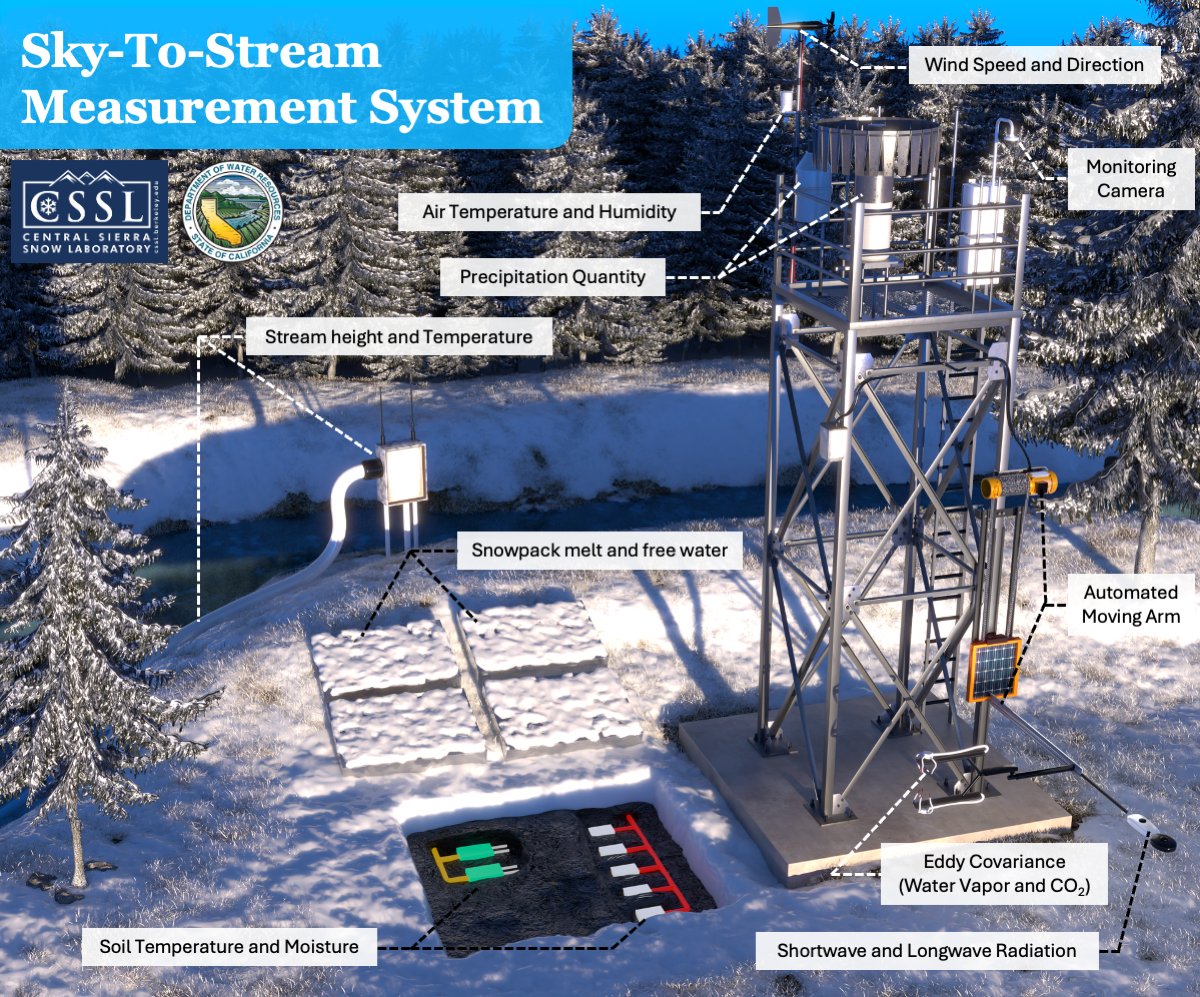
In partnership with the California Department of Water Resources, we have installed and are now operating the Sky-To-Stream Measurement System (graphic above). This system incorporates both established and innovative new technologies to measure water/snow from the moment it falls from the sky until it heads downhill in Castle Creek. The Sky-to-Stream Measurement System will enable snow, water, and atmospheric monitoring for years to come. Over 20 new instruments and monitoring systems have been installed on a new 25 foot tall platform that is feeding live data to the CSSL data server and website for anyone to use. Our camera system (on the home page) allows for the monitoring of weather conditions at CSSL.
This system enables testing and comparison of new technologies with proven instruments, which will allow for the next generation of snow, water, and weather sensors to be developed and deployed in the field. Additionally, this comprehensive measurement system allows for comparison with modeled hydrological processes that can result in model improvements where deficiencies are found.
Data used on this page is continually updated from the National Weather Service's National Operational Hydrologic Remote Sensing Center (NOHRSC). If the maps have not plotted, the data has not been updated yet and they will be created when the data is made available.
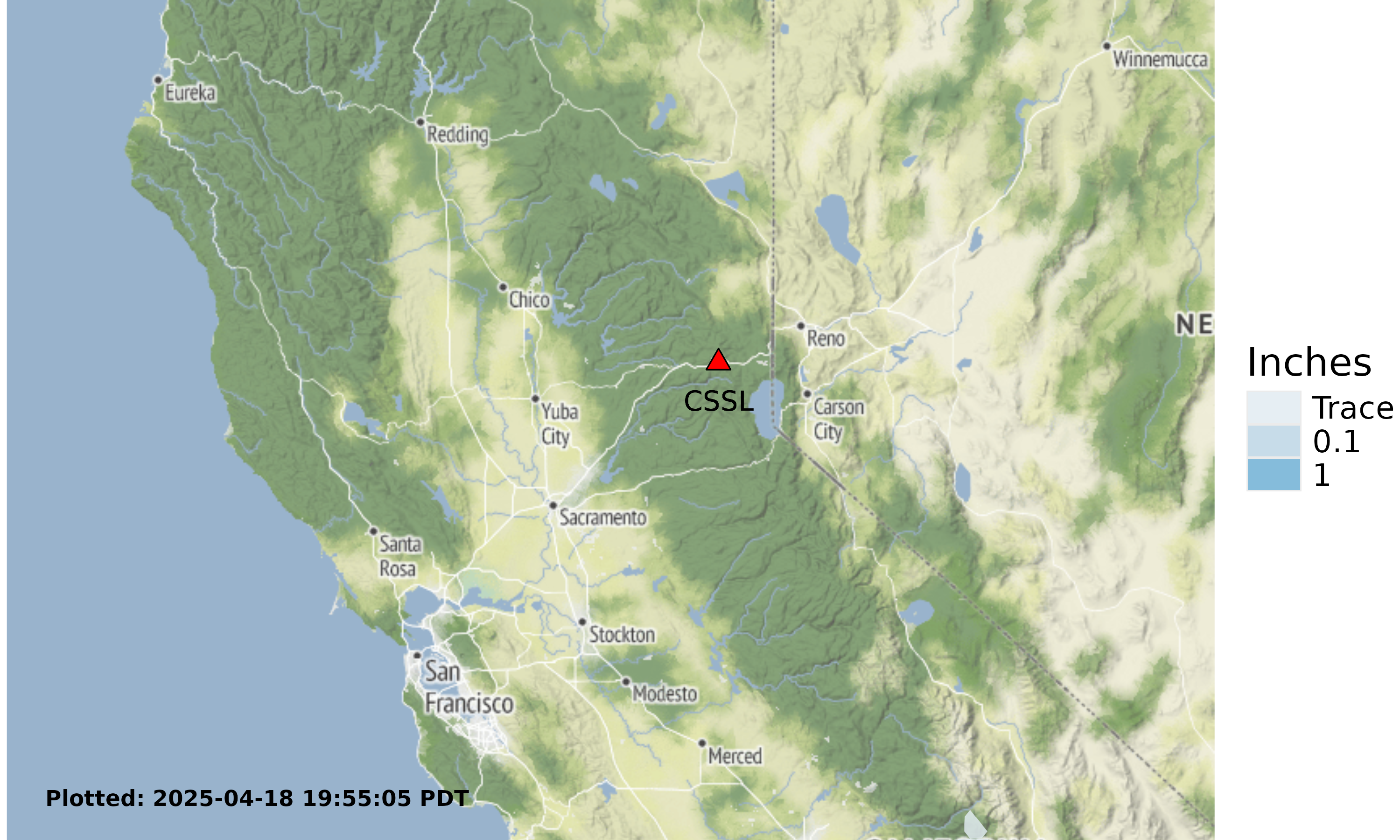
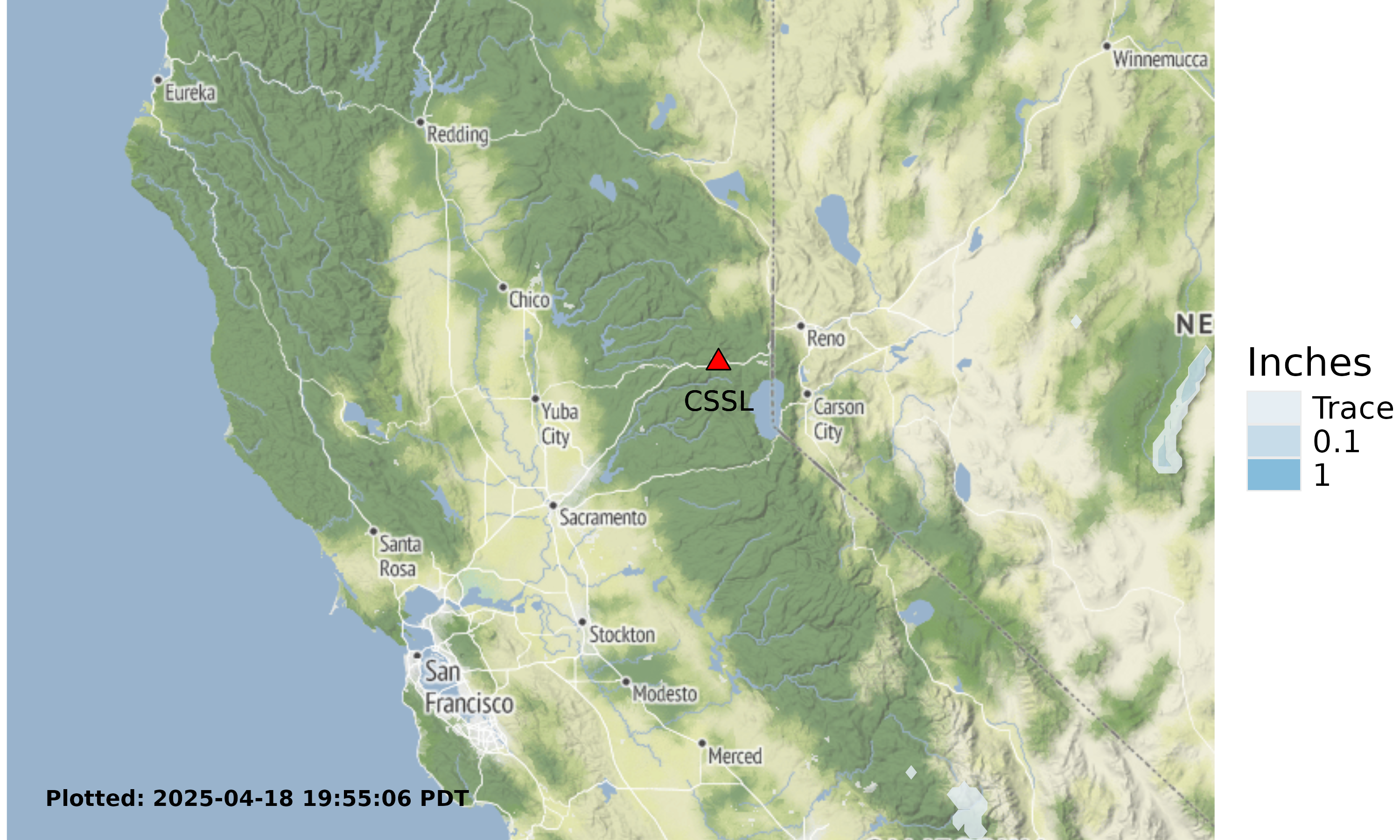
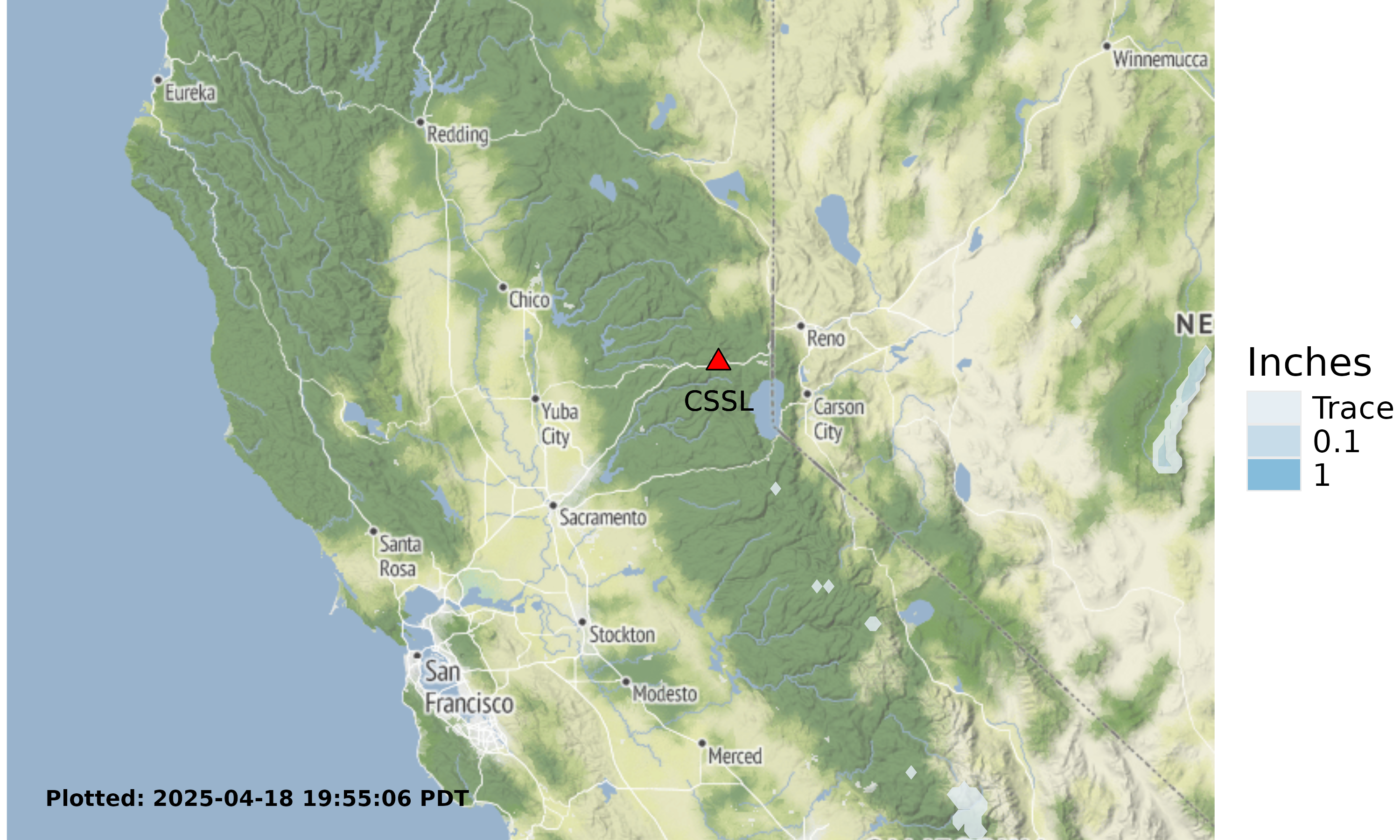
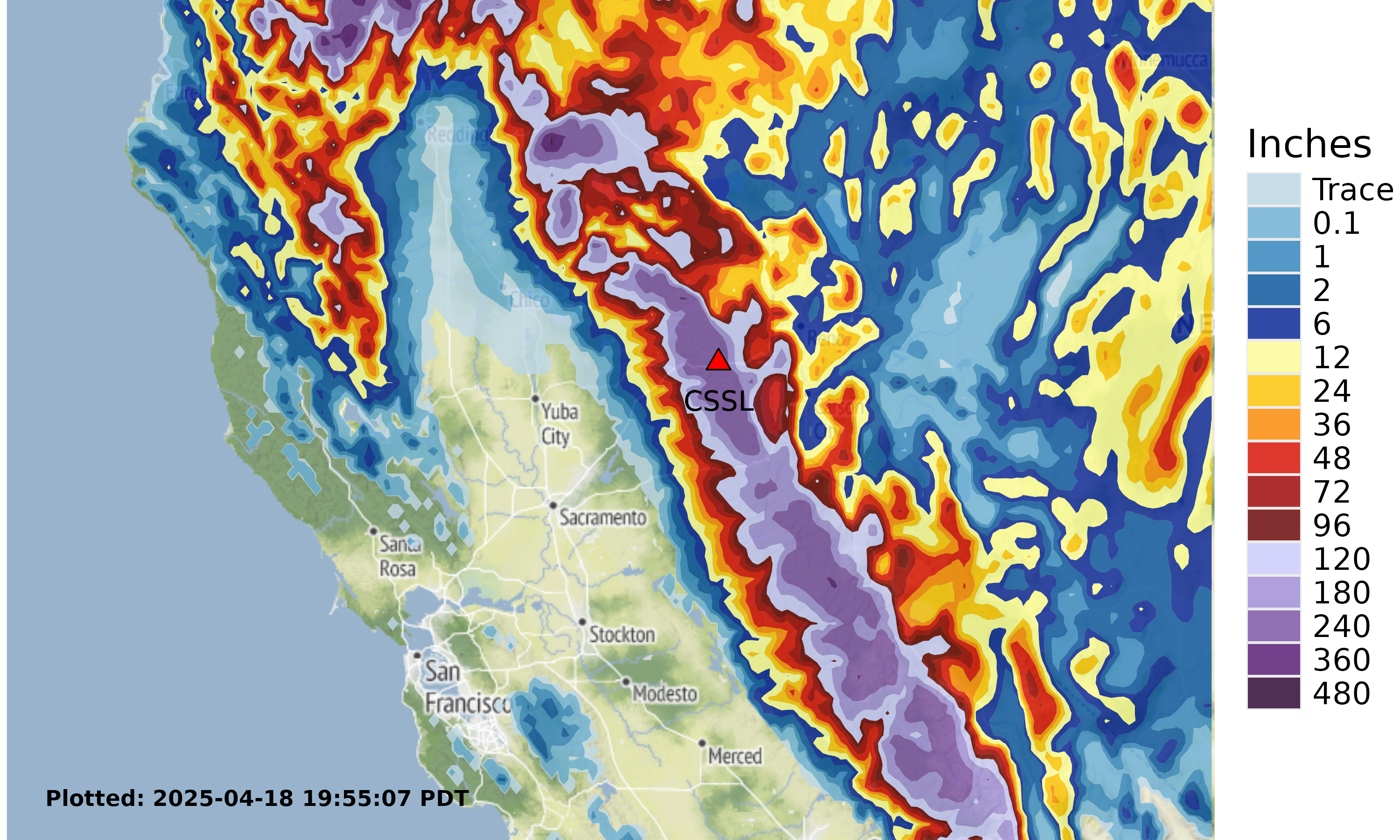
Data Citation: National Operational Hydrologic Remote Sensing Center. 2004. Snow Data Assimilation System (SNODAS) data products at NSIDC. Boulder, CO: National Snow and Ice Data Center. Digital media.
NOTE: Measurements from 1946 to present are used for direct comparison because these have all been made on the same site (the Snow Lab) using the same methodologies. Those before 1946 are omitted from direct comparison and are, instead, used for overall trend analysis because those were measured by the railroad on a different nearby site using slightly different methodologies.
Limited data exists for the 2019-2020 winter (Water Year 2020). SNOTEL data has been used for maximum snowpack depth and no data exists on total snowfall. We are working to rectify this data shortage as soon as possible.
We are regularly featured in news stories about snow, storm systems, meteorology, climatology, and California's water resources. For the most recent news featuring the lab, please visit:
Recent Snow Lab News on GoogleAt the top of Donner Summit, an old cabin rests in a thicket of tall trees. The structure is three stories tall, including the basement. Still, in the heaviest of winters, the snow drifts are deep enough to bury the front door, so the only way into the building is through a window on the top floor...
For the first time in its 73-year existence, UC Berkeley’s Central Sierra Snow Lab in December 2019 was without a single full-time employee. The previous manager had retired, Berkeley was considering eliminating its funding, and the Covid-19 pandemic was preventing the hire of a new manager. By January 2021, the hard work of the lab’s director, professor Rob Rhew, had saved the lab and I was appointed as the new manager to lead it into the future. There was, however, a catch that complicated my transition to the new lead of the lab’s daily operations: I was living in Australia...
How does this winter’s snowfall compare to last year, or the last decade, or even the last century? While early November in 2020 brought higher-than-normal snowfall to Donner Summit, the cumulative amount of winter snow as of Jan. 3, 2021 is roughly equal to below the 40-year median...
"The rest of the world looks to California to see how it manages its water resources," says snow scientist, Randall Osterhuber. "We've even had scientists from China visit our snow lab to study flood forecasting and stream gauging."
The Sierra Nevada snowpack is California’s most valuable natural resource, and not because of the popularity of winter sports. When all that frozen precipitation melts it supplies more than half of the Golden State’s total water supply. The first attempts to study this vital resource got underway right here in the Lake TahoeDonner Summit region...
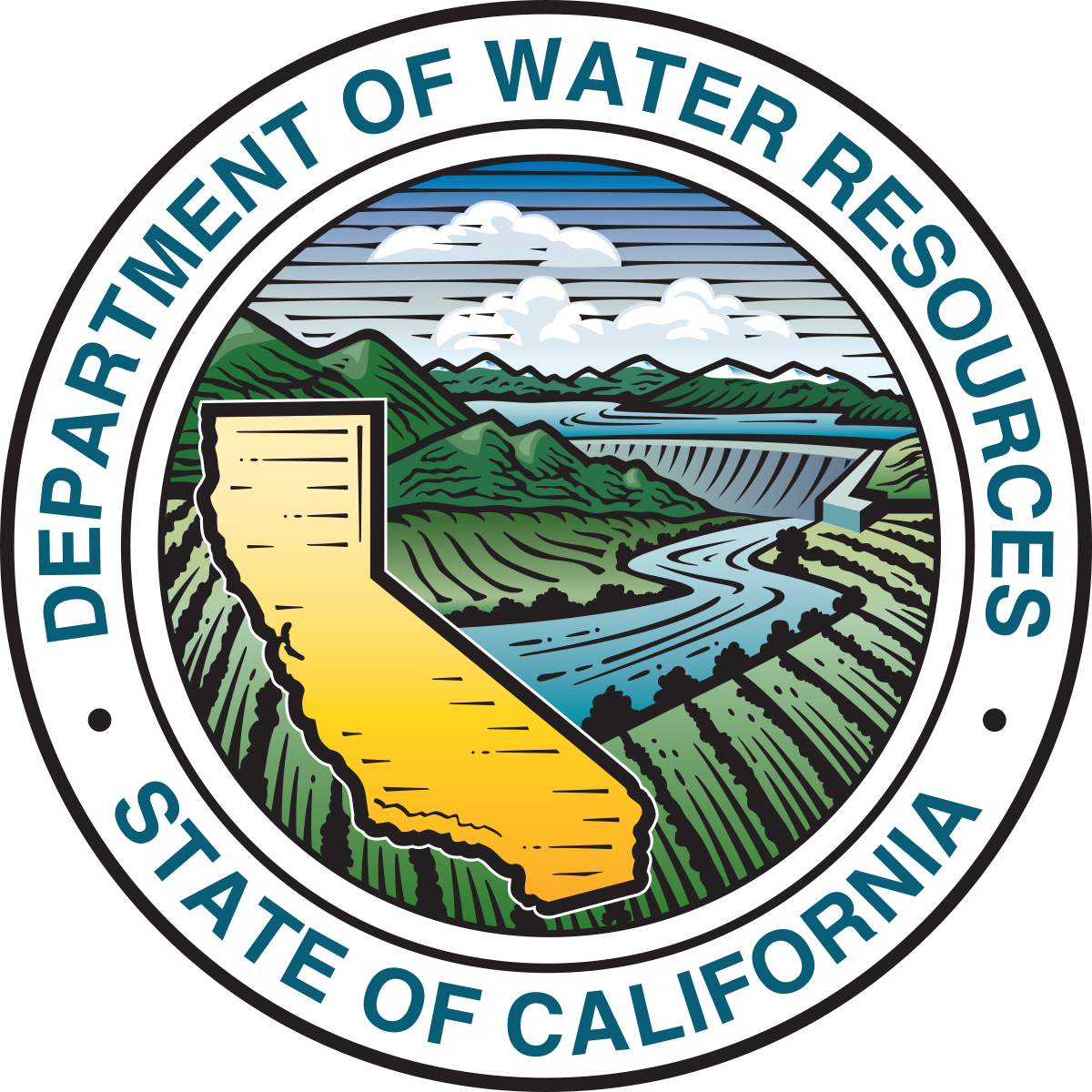
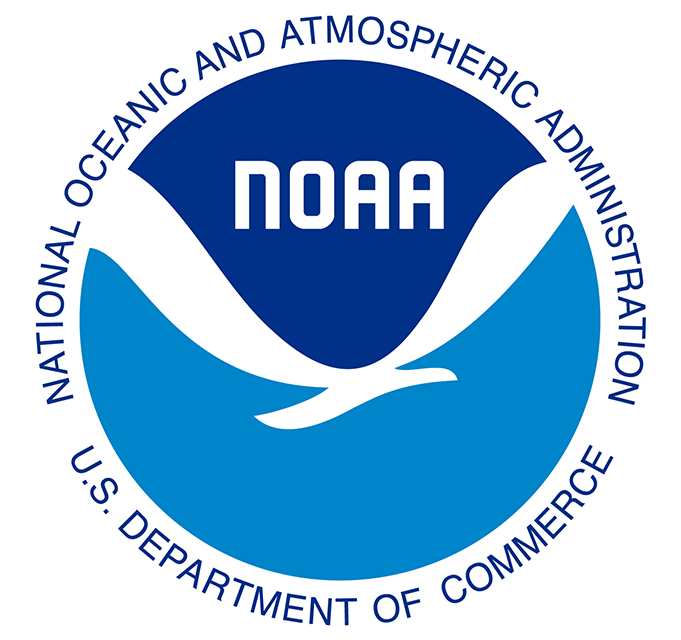
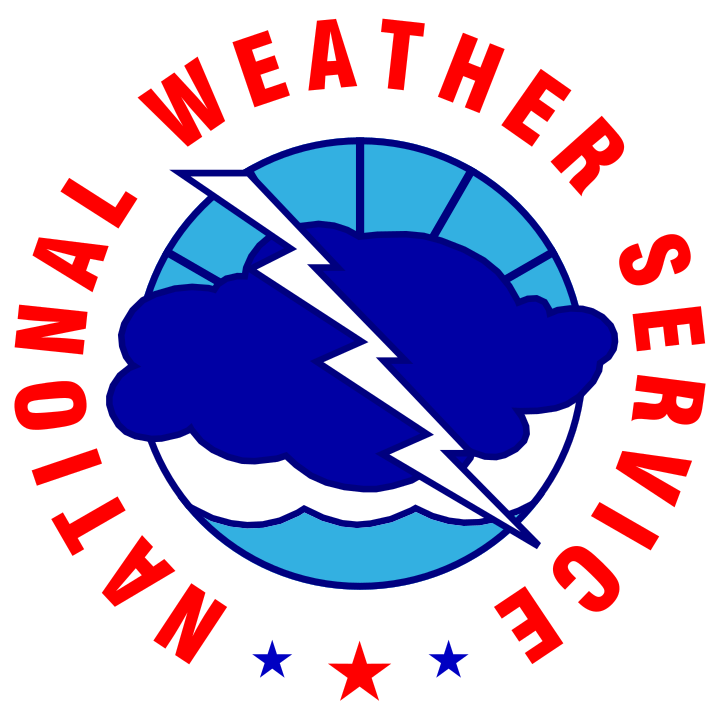
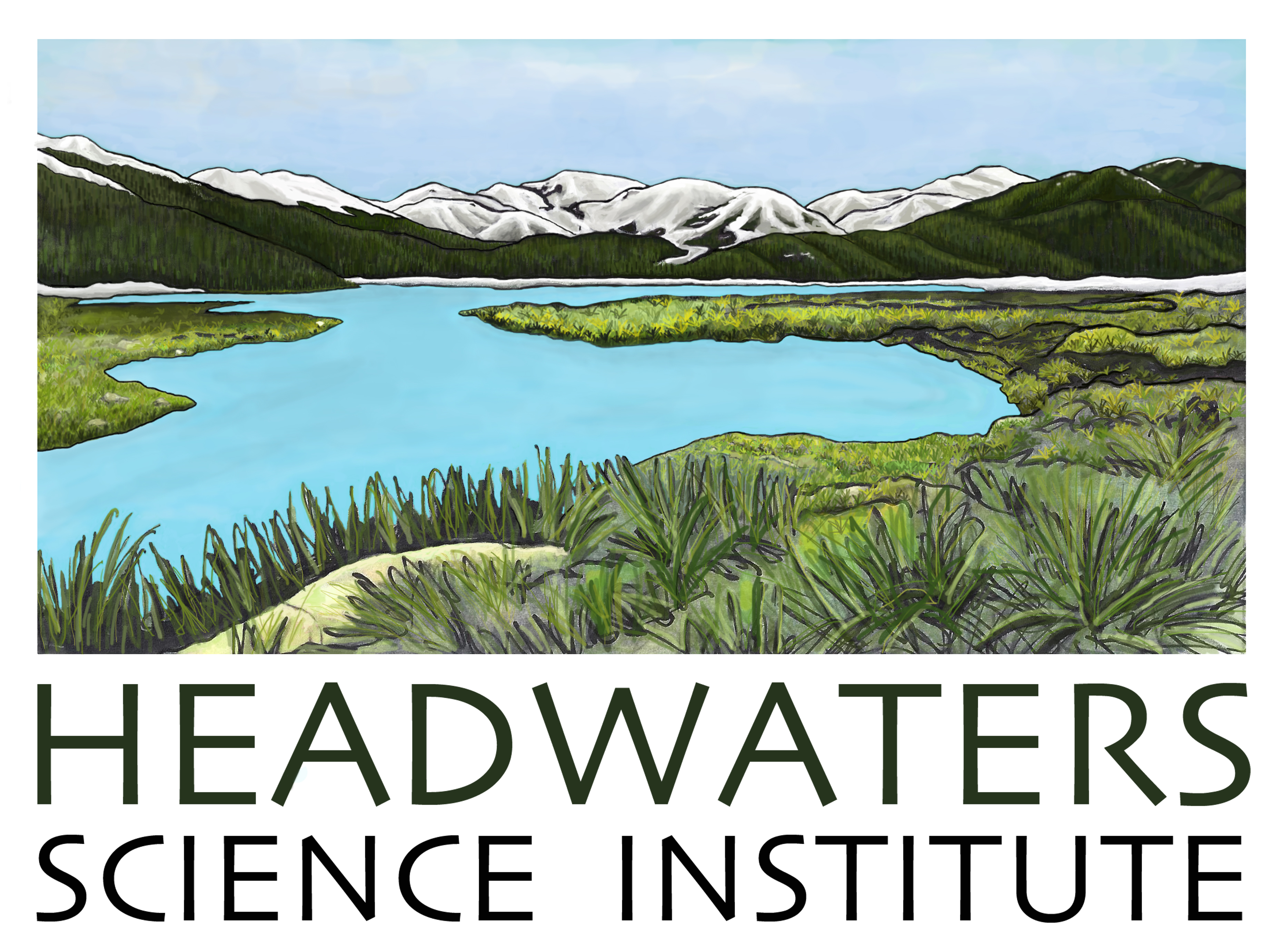
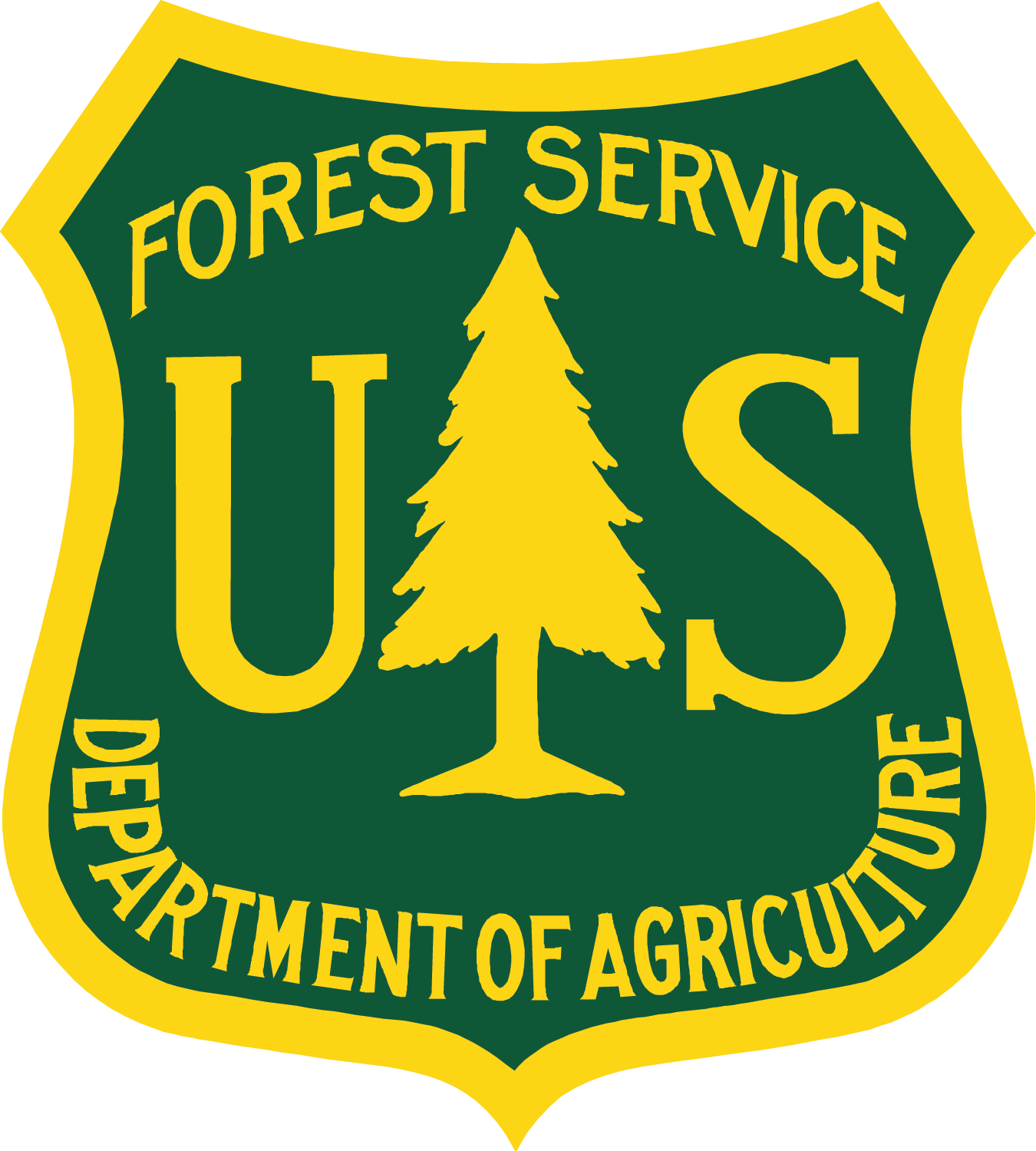

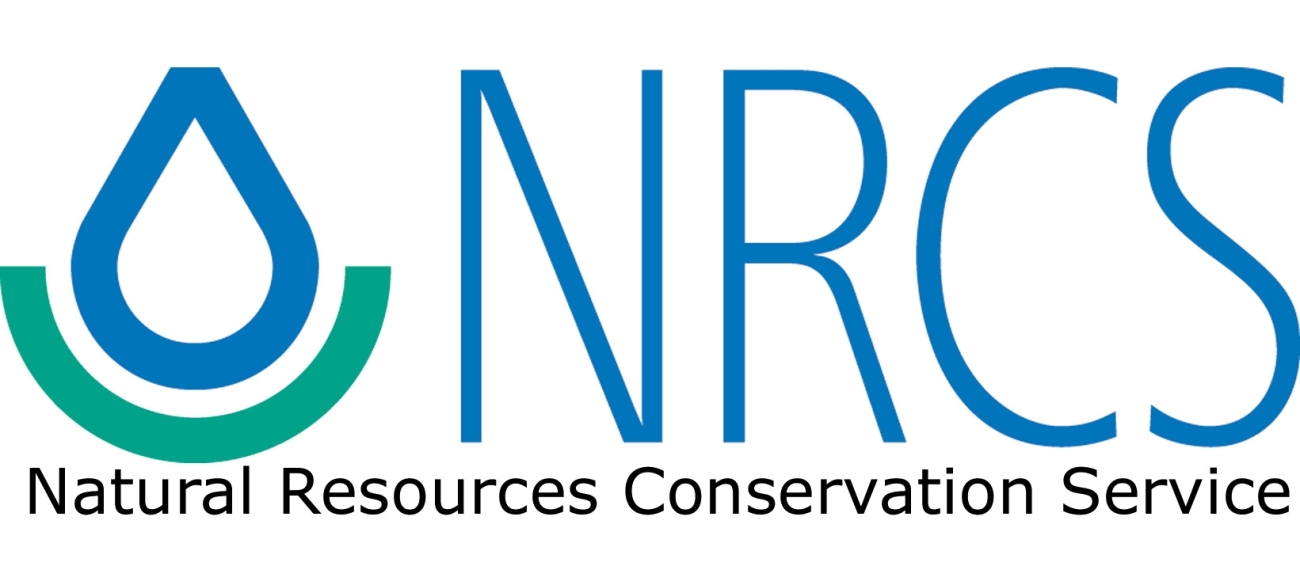




The snowpack of the Sierra Nevada Mountains is an indispensable freshwater resource for large portions of western North America. The Central Sierra Snow Laboratory (CSSL) has had an intigral role in the measurement of snowfall and snowpack properties within the Sierra Nevada Mountains, and has worked to develop a physical understanding of the processes that govern snow since 1946. This dataset contains measurements of temperature, precipiation quantity, snowfall, and snowpack characteristics including 24-hour snowfall, snowpack depth, and snow water equivalent for each water year (October 1 to September 30) from 1971 to 2019 at CSSL. Measurements were made at the same location at CSSL for the entirety of the 48 year measurement period to ensure continuity of record with minimal effects from difference in measurement location.
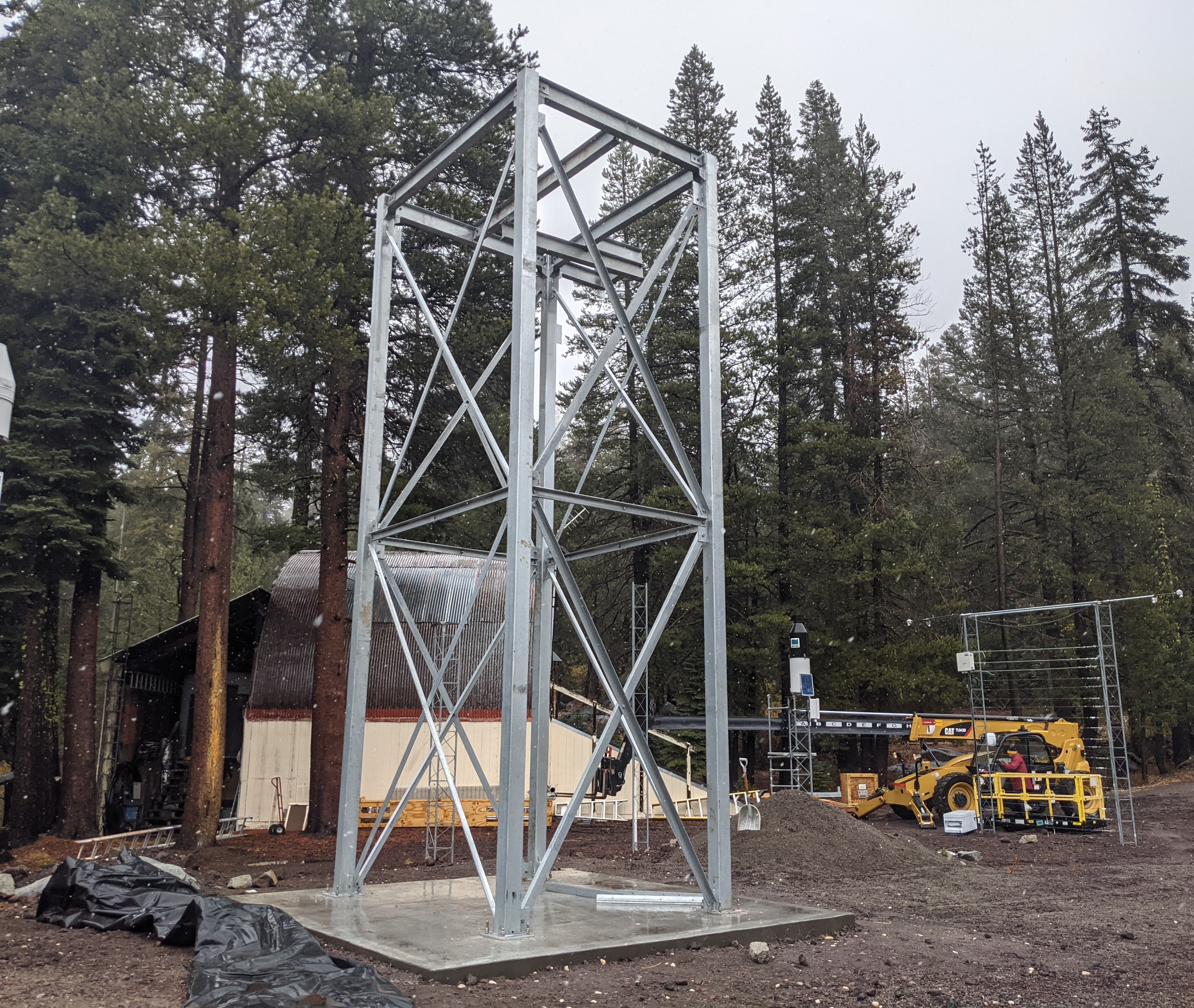
Leveraging the well-developed historical measurements obtained at the Central Sierra Snow Lab and innovative new technologies, the Sky-to-Stream Measurement and Intercomparison System will enable snow, water, and atmospheric monitoring for years to come. Over 20 new instruments and monitoring systems will be installed on a new 25' tall platform that will feed data live to the CSSL website for anyone to use. A camera system will be a part of this system and will allow for the monitoring of weather conditions at CSSL. This system will also enable the testing and comparison of new technologies with proven instruments, which will allow for the next generation of snow, water, and weather sensors to be developed and deployed in the field. This initiative is being funded generously by the California Department of Water Resources in cooperation with the CSSL.
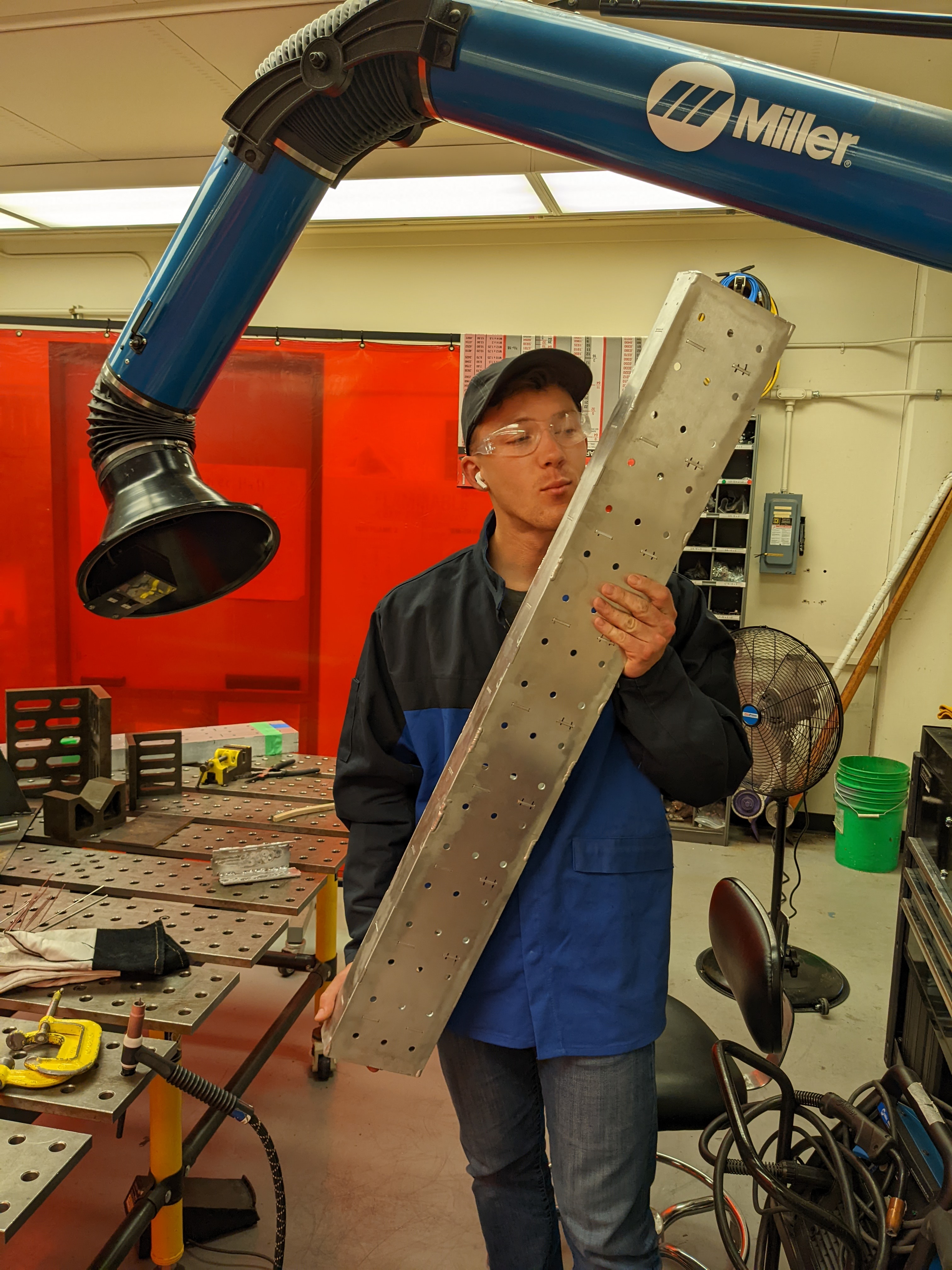
This project, in cooperation with the University of California, Davis, focuses the design and validation of a new iteration of snow scale developed based on previous scale designs and extensive research into snow mechanics. Snow Water Equivalent, or SWE, is a measurement of the amount of water contained in a snow pack. The practice of measuring SWE has been present in California since 1940, and is conducted by the California Department of Water Resources or the DWR. The state government uses the measurements of SWE provided by the DWR to issue flood warnings as well as to monitor that amount of fresh water supply. Currently, the DWR utilizes three different measuring systems to determine the amount of SWE. The first, most reliable, but time intensive method, is a snow core. This requires members of the DWR to migrate to each snow location to take an in person measurement. Due to time constraints, the DWR has developed snow pillows. These devices consist of a metal encasement filled with antifreeze that utilizes a pressure transducer and will output a pressure measurement as snow compresses onto the snow pillow. These devices have proven to be hard to transport and harmful to the environment due to the amount of antifreeze necessary and thus the DWR has recently invested into developing a snow scale, a load-cell based device.
NOTE: File naming convention is Subject_Topic_AuthorYear (e.g. Transportation_Bicycle_Mercury1978).
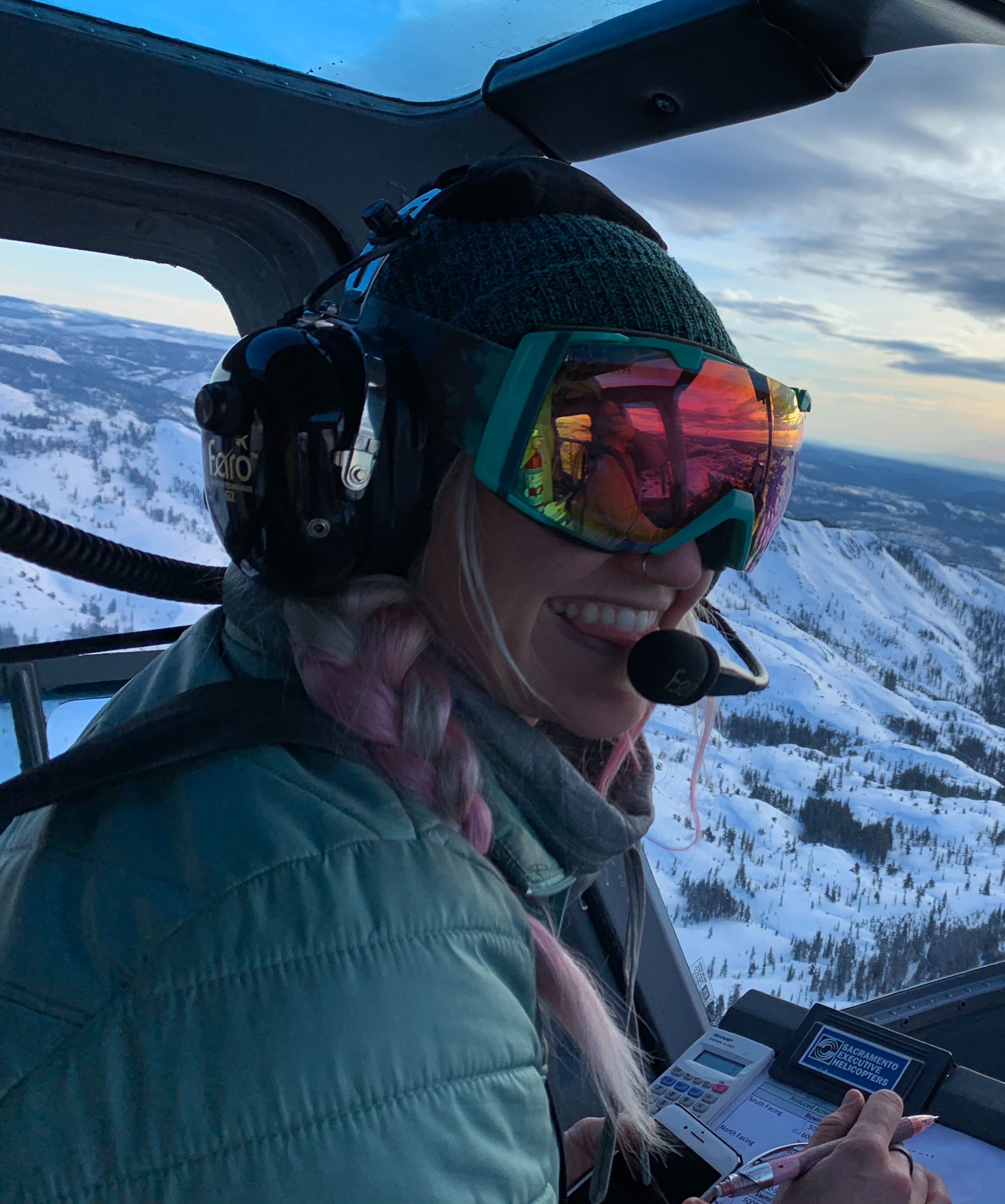
Collect and manage surface water data for 12 reservoirs, 4 canals, 5 powerhouses, and 13 stream flow sites. Maintain ~45 automated gaging stations, including a Snowfox snow sensor gage at one of our five CCSS Snow Survey locations. Perform annual snow surveys and water forecasting. Science is and should be collaborative. I want help foster the sharing of ideas, data, equipment, experiments, etc. so that everyone has an opportunity to learn and grow from each other.
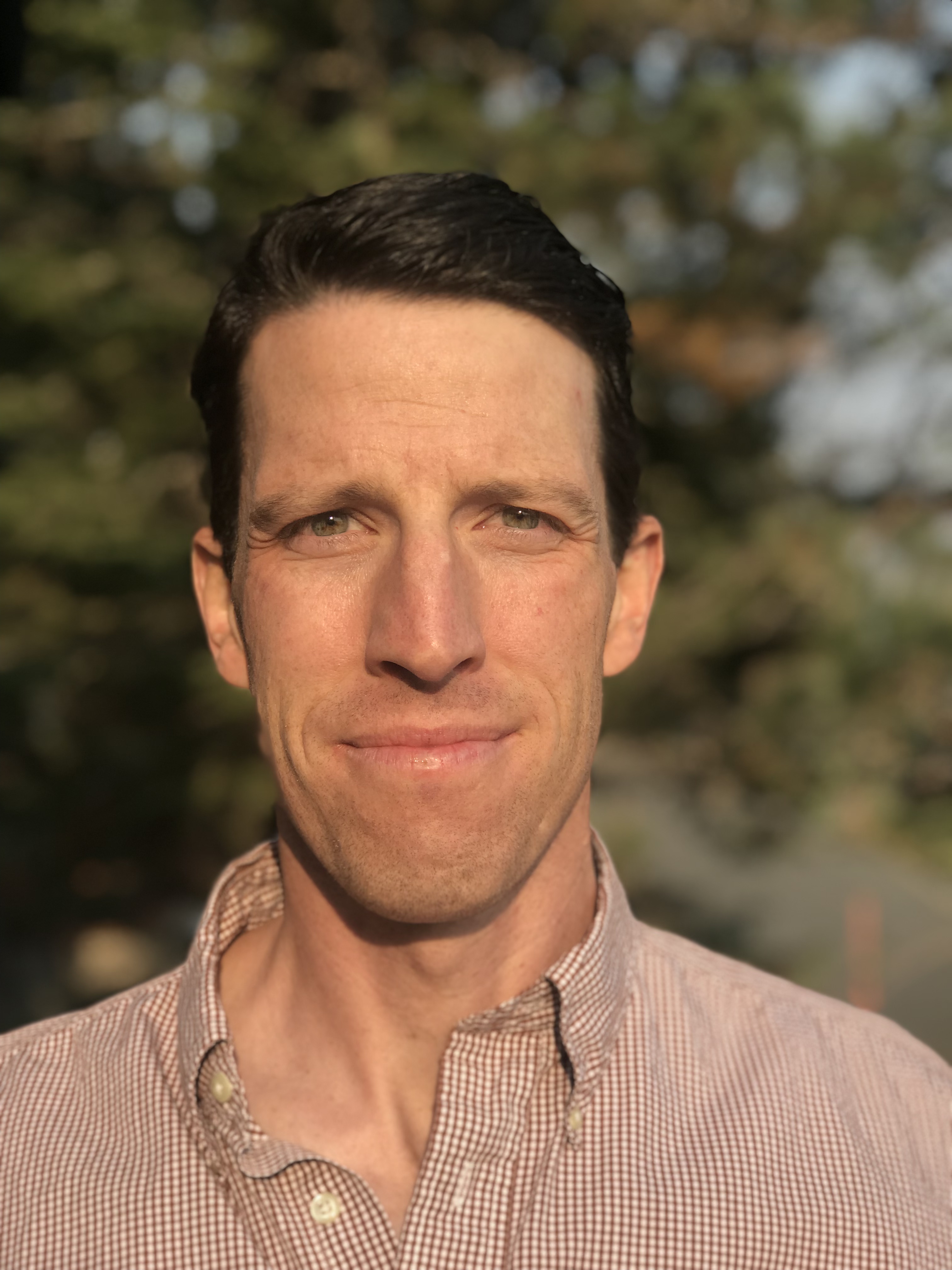
I see DART as an opportunity to improve communication and water monitoring efforts throughout California and western Nevada by leveraging resources from a wide range of organizations including: higher education, state and federal agencies, and local water districts. DART will lead to better met operational and research needs, thereby improving our understanding of current and future water supplies, critical to sustaining needs in our changing climate with high interannual variability.

I joined DART to use my passion for the mountains and learning to gain knowledge of our natural resources, assist in improving data gathering techniques in the field, streamline standards and operations, and provide solutions to any identified data gaps using my experience and knowledge in Electrical Engineering to provide better resource management services to the state of California.
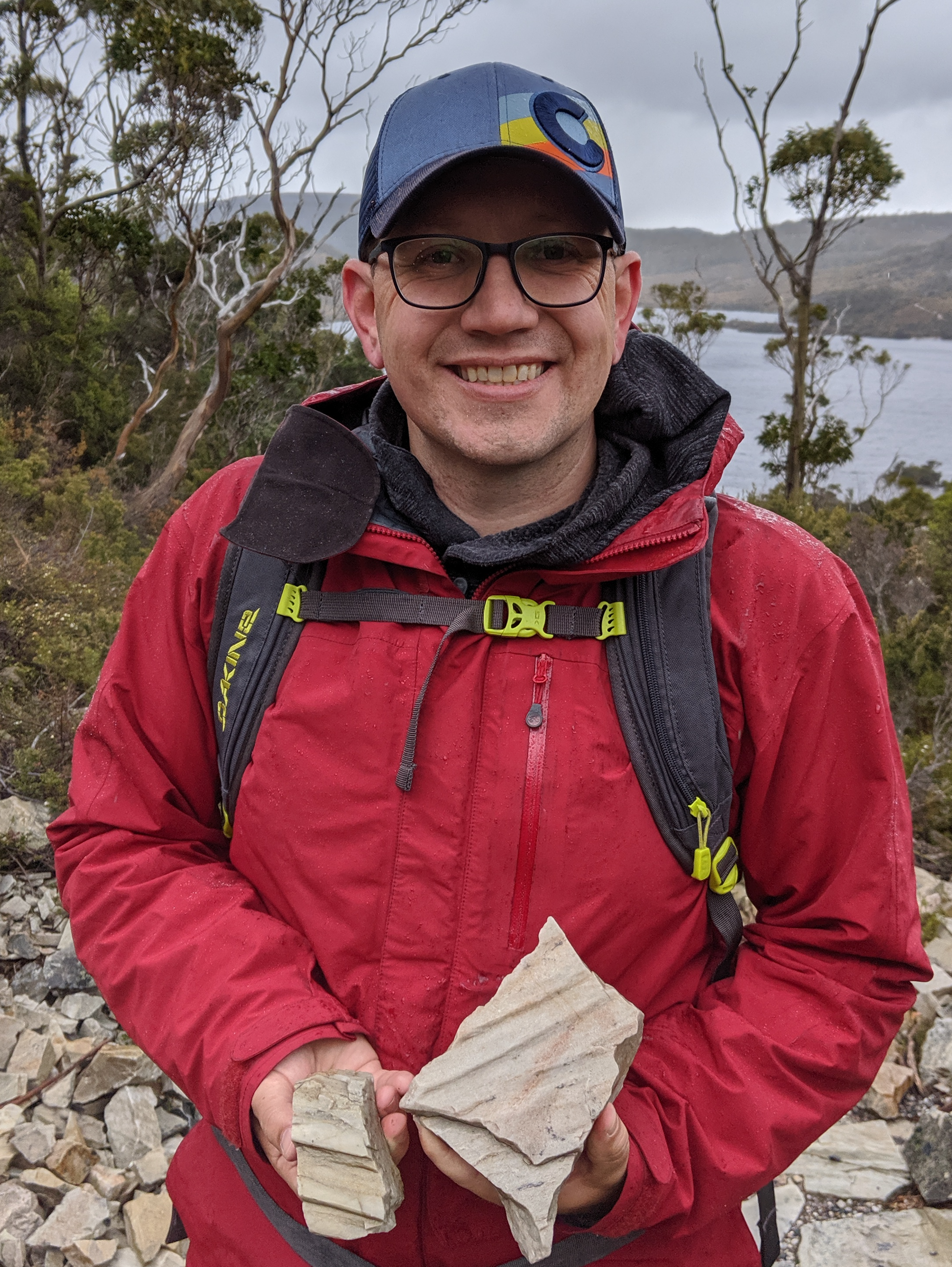
My interest in DART is centered around developing a community that is actively engaged in developing best practices for measurement methods and techniques that will help standardize hydrometeorological data across agencies in the west. I am also interested in using DART to develop a better research-to-operations pipeline that will increase our ability to forecast and manage water supplies as climate change progresses.
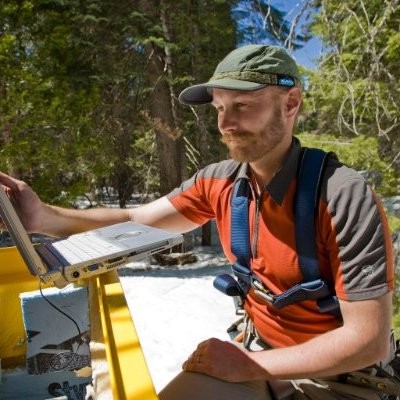
Matt is a California Licensed Professional Forester who specializes in hydrology compliance and environmental monitoring. He has experience in data collection and field management at a variety of organization structures including academia, public utility, and water association. Matt has an interest in historic and novel measurement techniques that can benefit water managers in a changing world.